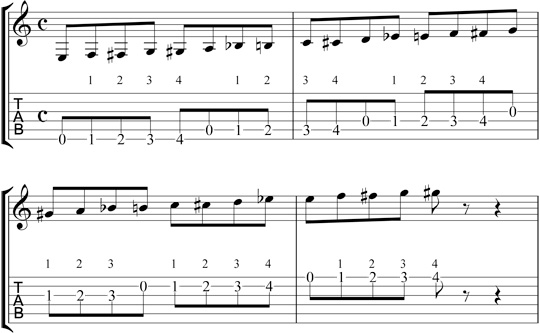

Yet another source of chords from outside the major scale are secondary dominants (and their related II chords), resolving to diatonic chords:Ī7 => Dm | => Em | => F | D7 => G | E7 => Am These other chord tones can also be borrowed from the parallel minor key, and the most frequently used chords are (again in C): Jazz players are fond of a famous quote that basically states: No matter where you are on the neck, if you hit a wrong note you’re only a half-step away from. Chromaticism plays an important role in the construction of melodic lines in jazz, allowing dissonance to resolve into consonance. If you combine the chords from the parallel (natural) minor scale and from phrygian, you get these additional triads in the key of C:ĭb major | Eb major | Ab major | Bb majorĪpart from these chords with root notes which are not part of the C major scale, you can also use chords with roots from the scale, but with other chord tones outside the scale. Simply put, the chromatic scale is all 12 notes. A chord with the b2 as a root can be borrowed from phrygian. The parallel minor key will give you chords with roots on all chromatic notes except for the b2 (the Db in the key of C) and the #4/b5 (F#/Gb). The concept of using chords from a parallel tonality is called modal interchange. In a major key, it is quite common to add chords from the parallel minor key. Because otherwise the obvious answer is that if you allow any note, any chord could be added. For me the only way to make sense of your question is to interpret it as "which chords outside the key are frequently added to a piece in major?".


 0 kommentar(er)
0 kommentar(er)
